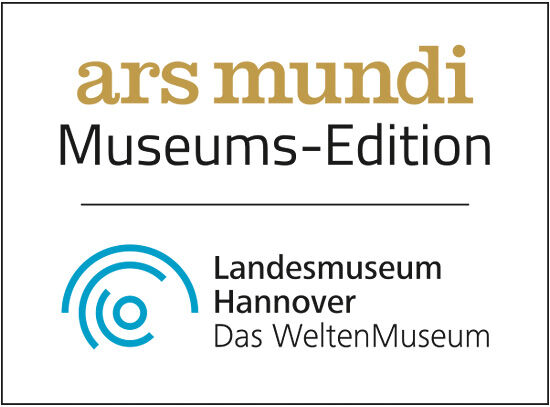Picture "The Noon" - from the "Time of Day Cycle", framed


Picture "The Noon" - from the "Time of Day Cycle", framed
Quick info
ars mundi Exclusive Edition | reproduction on canvas | on stretcher frame | framed | size 34 x 46 cm (h/w)
Detailed description
Picture "The Noon" - from the "Time of Day Cycle", framed
Caspar David Friedrich's works convincingly implement the Romantic idea of profoundly interpreting and deciphering the "book of nature". The "Time of Day Cycle", painted in 1821/22, also represents a cycle of life in which the viewer can discern childhood, youth, maturity and the serenity of old age.
"The Noon":
In the second part of the cycle, Caspar David Friedrich depicted a sandy path surrounded by heath and shrubbery that leads the viewer to distant dark woods. In the meadows, a hiker strides towards a pine grove while a second hiker approaches the viewer along the path.
This treasure of the Landesgalerie Hannover was transferred exclusively for ars mundi onto canvas and framed in a high-quality gilded solid wood frame. Size 34 x 46 cm (h/w).
"For over a hundred years, the 'Time of Day Cycle' has been one of the main works exhibited in the Lower Saxony Landesmuseum in Hanover. Four paintings depict ideal landscapes reminiscent of the European Harz Mountains or the Giant Mountains. Unlike the later impressionistic artworks, they were painted in the studio and don't depict the same motif. Caspar David Friedrich is the most important artist of early German Romanticism. He did not simply imitate nature but created pictures of great emotional depth. Thanks to ars mundi's excellent reproduction, these paintings are now accessible to many people, who can enjoy an everlasting experience of nature with these paintings." (Dr Katja Lembke, Landesmuseum Hannover)
This object is part of the following sets

About Caspar David Friedrich
1774-1840
Caspar David Friedrich was the most important German painter of the Romantic period. Even his person embodied the typical Romantic: he was rather introverted, close to nature and religious, he saw nature as a mirror of human feelings. In his meticulously painted canvases, Friedrich achieved incomparable metaphysical transparency.
"The painter should paint not only what he has in front of him, but also what he sees inside himself." With this recommendation to his fellow painters, Caspar David Friedrich explained the driving force and meaning of his paintings.
Landscape depiction holds a leading position in his oeuvre. Friedrich went on long hikes through the mountains and along the coast with friends. He captured human beings in their smallness in relation to the immense power of nature. The lonely figures look longingly into vast landscapes with distant horizons. They often turn their backs to the viewer so that he can put himself in their place. Using symbolic nature metaphors such as the moon as the universe and tree stumps as an indication of transience, he created contemplative romantic feelings and religious sentiments. Friedrich wanted his nature moods to provide insight into the human soul.
At the age of 24, after an academic education in Copenhagen, the young artist was drawn to Dresden. In the city along the Elbe, Friedrich and other painters, as well as poets such as Tieck and Schlegel, formed the centre of early Romanticism. The characteristic feature of Romanticism is the reciprocal effect of poetry and painting. Friedrich's landscapes are mirrors of feelings and seek to express visually what poetry achieves with words. "The depths of our spirit are unknown to us - the mysterious way leads inwards. Eternity with its worlds - the past and future - is in ourselves or nowhere." This is how the poet Novalis expressed himself on behalf of the early Romantics.
Graphic or sculpture edition that was initiated by ars mundi and is available only at ars mundi or at distribution partners licensed by ars mundi.
An attitude that spread from literature and philosophy into the visual arts, established in about 1800 but failed to produce its own style in visual arts.
The art of Romanticism was determined by the content of the awareness of life and the sensations triggered by it. Inwardness and feelings, dream and fantasy, world and nature, the power of mythical and the striving towards infinity became central themes. The actual realm of Romanticism lies in painting and drawing. Landscape, in particular, came to the fore as a recurring theme: man and nature were set in relation to each other and moods were reflected. Alongside the new feeling for nature, there was a renewal of religious attitudes and a return to the past, tradition, history, old legends, fairy tales, as well as to the art of old masters and epochs. Especially in the case of Germany, this was strongly national-oriented art.
Main representatives in Germany include C.D. Friedrich, P.O. Runge, J.A. Koch, M. v. Schwind, and also the Nazarene group of artists. French Romanticism, which was characterised by other trends than the German, is represented mainly by the art of Delacroix.
Romanticism lasted until around 1830.










